How to Build a Metaverse:如何创建元宇宙
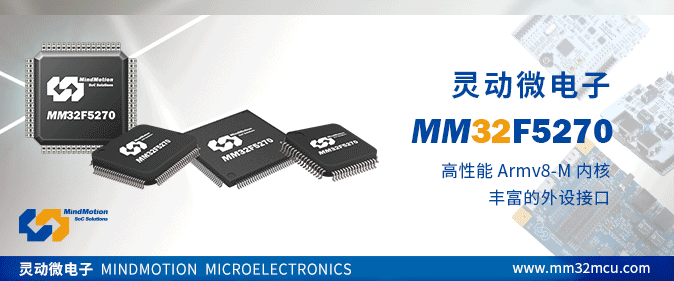
BRIAN SANTO: I’m Brian Santo, EE Times editor-in-chief. You’re listening to EE Times On Air, and this is the Weekly Briefing for the week ending November 5th.
Brian Santo:我是Brian Santo,《EE Times》美国版的主编。您正在收听的是EE Times全球联播。
Virtual reality is another one of those technologies that people have been talking about for decades but whose biggest payoffs seem to remain stubbornly in the future. Now Facebook, one of the biggest companies on the face of the planet, is betting its future on unleashing the potential of VR.
虚拟现实(VR)是另一项人们津津乐道数十年的技术,但其最大的收益似乎还要等到未来才能显现。当下,全球最大的公司之一Facebook将其未来押注在开发VR的潜力上。
Mark Zuckerberg’s grandiose plan to remake his troubled social platform Facebook into a VR powerhouse has cultural hurdles, of course. But Facebook will also be facing technological challenges; and furthermore, Zuckerberg could be steering his company into an area where he might run in to some formidable competition. This week, life, the metaverse, and everything with our guest Kevin Krewell, principal analyst at Tirias Research.
当然, Mark Zuckerberg让其陷入困境的社交平台Facebook转型为VR巨头的宏图难免存在文化障碍。但Facebook也会面临技术挑战;此外,扎克伯格此番愿景可能将Facebook引入一个竞争激烈的领域。本周,我们邀请到了Tirias Research公司的首席分析师Kevin Krewell,他将与我们一起探讨生活、元宇宙及相关的一切。
How long have we been talking about virtual reality? The concept of creating digital environments with the use of modern computers goes back to at least the late 1960s. Computer scientist and artist Myron Krueger was using the phrase “artificial reality” in the 1970s. In the 1980s, Jaron Lanier, who created some of the first virtual reality hardware systems at his company, VPL Research, certainly didn’t invent the phrase, but he unquestionably popularized it.
我们谈论虚拟现实多久了?用现代计算机创造数字环境的理念最早能追溯到二十世纪六十年代晚期。计算机科学家兼艺术家Myron Krueger在七十年代用的是“人造现实”一词。到了八十年代,Jaron Lanier的公司VPL Research打造了首批虚拟现实硬件系统,尽管Jaron Lanier不是该词的发明者,但毫无疑问是他普及了“虚拟现实”这一说法。
The upshot here is that the idea of virtual reality – or VR – has been percolating for a long, long time. But VR has yet to truly take off for a lot of reasons. It’s neither cheap nor easy to create both rich virtual environments for mass consumption and the infrastructure necessary to sustain them.
结论就是,虚拟现实(或称VR)的想法已经酝酿了很长一段时间。但基于种种原因,VR产业还未真正起步。创造丰富的虚拟环境供大众消费,以及建设维护其运行的基础设施既造价不菲,又难度颇高。
Over the years, various companies have dabbled in VR, but among the largest companies, Facebook in particular has been dedicated to the technology. It bought goggle developer Oculus in 2014, and has stuck with that business. For the last year or so, CEO Mark Zuckerberg has been talking up VR, or as he hopes to brand it, “the metaverse.” That term definitely is not new, by the way. It was probably coined by writer Neal Stephenson in his 1982 novel, “Snow Crash.” If you like science fiction and you haven’t read it, you really ought to get to it.
多年来,不少公司对开发VR均有涉猎,但在一些规模最大的公司中,Facebook尤其致力于此。Facebook于2014年收购了VR眼镜制造商Oculus,并坚持发展这项业务。过去一年多,Facebook首席执行官Mark Zuckerberg一直在鼓吹VR,也就是他所标榜的“元宇宙”这一概念。顺便一提,这个词绝不是新造的。它可能源自Neal Stephenson1982年的小说《雪崩》。如果你是科幻小说爱好者,并且还没看过这本书的话,那它值得一读。
Anyway, Zuckerberg recently doubled down on the metaverse, declaring that Facebook’s future will be in VR. His pitch is that the change in corporate mission is so radical it merits changing the name of the company to Meta. Facebook says the name change has nothing to do with its problems that have sprung out of its inherent refusal to take any responsibility for its business model or its actions. Hey, maybe they sincerely believe that. Anything is possible. Which explains why we’re talking about VR today.
总而言之,Zuckerberg近来大力宣扬元宇宙,称Facebook的未来就在VR。他改变公司使命的想法如此激进,不惜将公司改名为Meta。Facebook表示,更名与它本身的问题无关,这些问题是公司不愿为其商业模式或行为承担任何责任所导致的,他们向来如此。但说不定他们真的想创建元宇宙。一切皆有可能。这也是为什么我们今天探讨AR的原因。
And that brings me to introducing today’s guest. Kevin Krewell is a principal analyst with Tirias Research, where one of his areas of coverage just happens to be VR and AR. Kevin is an industry veteran, a savvy watcher of technological and business developments, and we’re pleased that he’s been a regular guest on this podcast.
首先我介绍一下今天的嘉宾。Kevin Krewell是Tirias Research公司的首席分析师,虚拟现实(VR)与增强现实(AR)正好是他的研究领域之一。Kevin是业界资深人士,对技术和业务发展有深刻的洞察力,我们很荣幸他能担任本频道的常驻嘉宾。
Here’s my conversation with Kevin about life, the metaverse, and everything.
以下是我和Kevin关于生活、元宇宙及相关一切的对话。
BRIAN SANTO: So we have noticed, you and I, that there’s this amazing new trend called The Metaverse.
Brian Santo:所以我和您都注意到有一种叫“元宇宙”(The Metaverse)的新趋势,它非常神奇。
KEVIN KREWELL: How meta!
Kevin Krewell:多“元”呀!
BRIAN SANTO: Yeah, exactly. What’s a meta you?
Brian Santo:确实。话说,你的“元”身是什么?
KEVIN KREWELL: Hey, what’s a madda you? Eh?
Kevin Krewell:嘿,你的“元”身又是什么呢?(互相调侃)
BRIAN SANTO: Yeah. Let’s hope there are some people out there who remember Bullwinkle and Rocky. So, we’ve got Facebook, famously either, well, they were on the metaverse before they got into a lot of trouble. So it’s legitimately not only a distraction from whatever political winds they’re facing, but it’s a real idea that Facebook has been looking into for a while.
Brian Santo:好。希望有听众能记起“松鼠与麋鹿的冒险”(Bullwinkle and Rocky)这款游戏。众所周知,Facebook在麻烦缠身以前就开始研究元宇宙了。这样做不仅合法缓解了他们面临的一切政治风波,也是Facebook的真实意图,他们已经研究元宇宙一段时间了。
KEVIN KREWELL: They bought Oculus for that very reason, right? They bought Oculus because they wanted to double down on this idea of an extended connection between people using virtual reality. So Mark Zuckerberg is a true believer in that sort of Metaverse, “Ready Player One” type of view of the world.
Kevin Krewell:他们收购Oculus为了缓解所面临的政治风波,对吧?借助虚拟现实拓展人与人之间的联系,为此他们收购Oculus来实现这个想法。所以Mark Zuckerberg眼中的元宇宙是“头号玩家”里的那种世界。
BRIAN SANTO: Yeah, well, I guess the question is, how many more people will buy in? I mean, you take a look at, for instance, you take a look at a visionary like Elon Musk, builds Tesla, and everybody has to play catch up. I mean, Oculus has been around for a while and nobody’s really… Not nobody. It’s VR and AR still hasn’t caught fire. It’s still an idea, but it just hasn’t caught fire yet.
Brian Santo:是的,我想问题就在于,有多少人认同他的想法?比如说,像埃隆·马斯克(Elon Musk)这样富有远见的人物,他创立了特斯拉,所有人都只能处在不断追赶的状态。我想说的是,Oculus已经成立了一段时间,但没有人能真正……也不能说没有人。只是虚拟现实(VR)和增强现实(AR)始终没有成为主流,仍只是一个概念,未引起广泛关注。
KEVIN KREWELL: Yeah, I’d agree, except for the fact that they have sold millions of these Oculus Rift headsets. Now the question is, how many of those are sitting in closets collecting dust? So there was definitely a sense that this was cool. This is new. Everybody wanted one. There were a shortage of them. People bought them a couple years ago, and last year to The Quest II came out. And then they used it for a little while.
Kevin Krewell:是的,我同意,哪怕他们已经卖出数百万套Oculus Rift系列头显。现在问题是,有多少副头显搁在柜子里积灰?当时人们肯定觉得它很酷,觉得这是新科技,每个人都想拥有一套。那时它们供不应求。人们几年前买过一副,去年又推出了Quest 2系列。但人们买了以后也只用了很短一段时间。
And then a lot of times, they just got put aside and never picked up again. Even during the Oculus Connect event. There was a question that John Carmack, their consulting CTO, suggested that this could be a real problem. That they there’s just not people just picking it up and just getting into it. And some of it is, it’s kind of clunky still. You need these controllers in your hands to track stuff. The thing on your face is kind of bulky. You get maybe a couple hours at best of use before the battery runs out. Because they don’t have a lot of battery in it.
人们买了头显后,更多只是搁在一旁,再没戴过。哪怕在Oculus开发者大会上也没戴过。Oculus的首席技术顾问约翰•卡马克(John Carmack)提出,真正的问题可能就是没人想把头显拿起来戴上。一是因为设备仍有些笨重。你得握着手柄追踪物体。脸上戴的东西也略感累赘。因为头显里放不了很多电池,你可能玩几个小时它就没电了。
But there’s a whole bunch of new titles coming. And in a couple weeks, I’m gonna be at Augmented World Expo, which is one of the big events in this space, and there’s a whole bunch of new headsets coming out.
但一大批新产品即将面世。我会参加几周后举办的世界增强现实博览会,它是业内一项重大活动,将展出一系列新型头显。
But certainly the company that has invested most in the metaverse type of concept is Facebook. They’re selling the Oculus stuff pretty much at cost. So that’s both good news and bad news. It’s good because it gets a lot of headsets out to a lot of people at a reasonable price. But it’s bad because it’s difficult for anybody to compete with them, because it’s subsidized.
但可以肯定,在元宇宙型概念上投资最多的就是Facebook。他们几乎是以成本价出售Oculus的产品。这有利有弊。好是好在它价格合理,很多人买得起头显。坏则坏在其他公司很难与他们竞争,因为Oculus有补贴支持。
You know, Mark, Zuckerberg and Facebook are throwing billions of dollars at this thing. And so they’re underpricing it to try to get it to a large group of people. So it’s kind of a mixed bag there.
你知道,Mark Zuckerberg和Facebook为头显投入了数十亿美元。所以他们压低价格是为了增加销量。所以说有利有弊。
BRIAN SANTO: Yeah. So a part of the question, I guess, is what you actually use this stuff for. So you’ve got different applications, some of it’s gaming, we know that there’s some that’s industrial, but those tend to be really valuable, but also really low volume.
Brian Santo:是的。所以我猜测,问题的一部分在于该设备实际应用于什么场景。所以你们设置了不同的功能,有些用来玩游戏,有些用于工业,但后者往往造价高、产量低。
INTERVIEWER: Yeah. And those have been around for a very, very long time. Augmented reality glasses for repair work, construction, that type of application. These types of glasses have been around for a long time, actually, for those applications, industrial.
Kevin Krewell:没错。增强现实眼镜用于维修、建设之类的应用场景已经很长一段时间了。事实上,这些类型的眼镜用于上述用途或工业已经很久了。
BRIAN SANTO: Right, right. Those companies are doing okay, but their business model is kind of a low-volume thing. You know, Zuckerberg, Facebook, they’re talking about millions, maybe tens of millions. And then there are other companies in the industry that are interested in VR, or could have an interest in VR, they’re positioned to do it. But part of the question is, what is VR? I mean, it sounds like Zuckerberg is thinking about this, like this social universe. You know, you talk to Microsoft, they’re talking about maybe gaming for the Xbox. What’s the metaverse? And is it different from company to company?
Brian Santo:是的。这些公司的产品不错,但却是小批量生产。你知道,对于Zuckerberg以及Facebook而言,他们想要的是上百万,或上千万的生产规模。业内还有其他公司对虚拟世界(VR)感兴趣,或可能对其感兴趣,他们准备进军这个领域。但有一个问题是,什么是VR?我的意思是,Zuckerberg似乎想将VR应用于社交网络。如果你去问微软(Microsoft),他们则想将VR应用于 Xbox游戏。那什么是元宇宙呢?不同公司所创建的元宇宙一样吗?
KEVIN KREWELL: Well, let me just clarify that Microsoft has yet to actually promote a VR solution for Xbox. Sony, though, has PlayStation VR. And they’ve been using that for gaming. Yeah, Microsoft has focused on the industrial applications, the visualization. They just announced Microsoft Mesh, which is a co-presence type of application. And this is actually very similar to what Nvidia has been talking about with their Omniverse, which is kind of a mix of 2D reality through flat screens and 3D using VR or AR headsets to allow people to cooperate on projects, if it’s a work project, or cohabitate spaces.
Kevin Krewell:关于这点我想澄清一下,Microsoft的Xbox游戏还不支持使用VR设备。不过,索尼(Sony)支持使用PlayStation VR。他们一直都将VR应用于游戏领域。是的,Microsoft一直专注于工业应用,即可视化。他们刚发布了Microsoft Mesh,一款共享协作式的应用。它实际上与英伟达(Nvidia)一直宣传的“全宇宙”(Omniverse)高度相似,全宇宙是2D和3D的结合,即二维的屏幕和三维的VR或AR头显搭配使用,人们可以进行项目协作,它算是一个协作项目,或共生空间。
I mean, some of it is, you know, we’ve talking about Zoom fatigue. People are just tired of doing flat video conferencing. If you’ve got more of a presence through a holograph, or holo presence of some sort, maybe that’s more natural, and maybe that’s more interactive, and it feels more like you’re in touch with the other person and coexisting in a space of virtual rooms, I would say.
我想说,我们经常提到Zoom视频会议疲劳症(Zoom fatigue)。人们厌倦了这种平面式的视频会议。如果通过全息图或某种全息技术呈现你的存在,可能会更自然,更具互动性,感觉更像是与对方共同处在一个虚拟的房间内进行交谈。
So there’s advantages there. Whereas Zuckerberg is definitely more social, although the lead application for VR has always been gaming in that regard. But Mark wants it to go beyond gaming. He wants this kind of co-presence in a VR world. And that’s pretty much “Ready Player One” type of environment, where you go into a virtual reality environment, you work with other people, they have their own avatars, you build stuff, you trade stuff, and it becomes its own virtual economy as well. And again, this is not completely new. I mean, if there’s anybody old enough to remember Second Life…
所以元宇宙的优势就在于此。尽管Zuckerberg肯定更注重社交性,但VR的社交主要应用在游戏中。但Mark希望不仅仅在游戏,而是在VR 世界中实现这种共同在场。它很像“头号玩家”式的环境,你进入一个虚拟现实世界,与其他人一起工作,每个人都有各自的虚拟身份,你在那里搞建设,做交易,规划自己的虚拟经济。再次强调,这不是一个新想法。我是说,那些上了年纪的人,可能还记得“第二人生”(Second Life)这款游戏……
BRIAN SANTO: What do you mean old enough to remember? Second Life still exists, man!
Brian Santo:上了年纪?“第二人生”还在呢,伙计!
KEVIN KREWELL: I know. It’s still around. And then there was a follow-on, Sensar, from the same guys, which was a better virtualization environment. But yeah, Second Life, which was really designed just for 2D screens, but a virtual place where you could build and trade and sell items in a virtual economy, as well as like, you know, companies like IBM would have virtual reality meetings in Second Life.
Kevin Krewell:我知道,它还在运营。后来还出了第二代叫Sensar,是同一批人研发的,虚拟环境做得更好。然而,“第二人生”(Second Life)实际上是为二维屏幕设计的,但人们可以在这样一个虚拟世界中建房,或在一个虚拟经济中交易和兜售物品,而像国际商业机器(IBM)这些公司,可能会在“第二人生”中召开虚拟会议。
So we’ve been kicking this thing around for a while. And what’s getting better is the hardware. And the company that actually does most of the hardware for standalone VR and AR is Qualcomm. Qualcomm is positioning themselves as the lead in this area, and they’ve continued to invest in it. You know, Samsung had dabbled in it and then sort of lost interest. There are other companies that could do more work in this area, like MediaTech, Huawei, whatever. Those companies haven’t really stepped up yet to a volume platform, whereas Qualcomm has created their own version of the chips, specifically for AR or VR. They’ve invested more in this space than anybody else has, and keep building reference platforms and such.
所以我们研究这个有一阵子了,我们的硬件越做越好。实际上,为VR/AR一体机生产大部分硬件的公司是高通(Qualcomm)。Qualcomm将自己视为业内龙头,并继续投资芯片。你知道,三星(Samsung)对VR曾有涉略,后来也失去了兴趣。还有其他公司可能会在此领域发展更多业务,如MediaTech、华为等等。这些公司的产量还不足以打造量产平台,而高通已经开发了自己的芯片版本,专门用于AR或VR。他们在芯片领域的投资是最多的,同时不断开发参照平台或其它类似的平台。
BRIAN SANTO: In your estimation, is the set of skills you need for building a virtual reality platform unique? Or could someone like a Huawei or MediaTech or whoever just decide, okay, we’re committing to this. Bing! We’re in and we’re competitive. Or if somebody were to make that decision, they’d be playing catch up with Qualcomm?
Brian Santo:在您看来,构建虚拟现实平台所需的一系列技能是否要独一无二?或者比如华为、MediaTech等任何一家公司都可以决定进军这一领域。嘿!我们来了,我们不可小觑。还是说任何想涉足芯片的公司都得向Qualcomm看齐?
KEVIN KREWELL: Well, they’re playing catch up with Qualcomm just because Qualcomm has done the most work so far. So you have to catch up with what they’ve already invested into developing reference platforms, understanding 6DOF type of tracking, all the tracking algorithms and the working with the vendors in terms of optics. The optics have to be tuned for VR and AR.
Kevin Krewell:说到这个,他们以Qualcomm为目标,只是因为目前Qualcomm做了绝大部分的工作。所以,无论是开发参考平台、掌握六自由度式追踪和一切追踪算法,还是与供应商在光学方面进行合作,让光学设备根据VR/AR进行调试,你都必须参照高通在这些方面的投入。
BRIAN SANTO: And that’s not insignificant.
Brian Santo:这投入可不小呀。
KEVIN KREWELL: No, no, it’s not. But it’s not to say that nobody can’t do it. They’re just a matter of making the investment. And I think what is, everybody’s waiting for the market to really develop. There’s probably not enough market share for everybody to get involved. So all right, Qualcomm’s got it for now, if at some point in time the thing really takes off, it really starts selling tens of millions of units, then I expect other companies will step into this space.
Kevin Krewell:没错,一点也不小。但并不代表没人能做到,不过是投资而已。然而,我认为问题在于所以人都在等VR市场真正发展起来。但不是每个人都能抢占足够的市场份额。所以,没办法,当下Qualcomm已经占领了市场,哪一天AR真的发展起来,高通真的能卖出几千万组芯片,那我预计其他公司也会涉足芯片领域。
And it’s not even to say that a company like Facebook or the other vendors in this area don’t build their own chip. Facebook has capability of doing chip designs. Google does. Right now Google I think has been there, done that. I think they’re holding off getting involved in the metaverse at this point in time. But you know, they could at some point in time say, This is too important. Facebook’s in it. Microsoft’s in it. We at Google need to be in it as well. So there’ll be another player I could see getting involved.
不是说Facebook这样的公司或其他芯片供应商做不到自研芯片。Facebook有能力设计芯片。谷歌(Google)也是。我认为Google的芯片已经研制成功,他们这个时候还不想入局元宇宙。但你知道,他们可能会在某个时刻宣布,元宇宙至关重要。Facebook入局了元宇宙。Microsoft也不例外。Google也迟早会加入。我可以预见未来还会有其它公司参与其中。
BRIAN SANTO: Yeah, It’s interesting that you brought up Second Life. I’m of the opinion, having seen a lot of different technologies develop, Second Life was a great idea that was maybe a little bit too early, a little bit before the technology could really deliver on the promise.
Brian Santo:没错。有意思的是你提到了“第二人生”(Second Life)。看到许多不同的技术发展进步,我认为“第二人生”的设想很伟大,但有些过于超前,在攻克技术难关以前谈该设想的实现还为时尚早。
KEVIN KREWELL: Oh, yeah.
Kevin Krewell:确实。
BRIAN SANTO: And socially too early. I mean, the notion of living in a virtual space wasn’t really there. And now I’m thinking that’s no longer the case. I haven’t actually played the Farmville games. Where you actually have digital economy and people are trading resources and interacting with each other. And it’s on a flat 2D screen. I can see where there is culturally a greater openness to jump into a virtual world because they’ve already kind of been there. It was 2D. Going 3D probably would not be that big of a jump.
Brian Santo:谈社交性也为时过早。我之前觉得在虚拟空间中生活的想法不可能实现。但现在我不这么认为。其实我没玩过“乡村度假”(Farmville)。这款游戏里你可以经营数字经济,玩家可以交易资源,相互交流。这是一个二维屏幕上的世界。我看到这款游戏的玩家对进入虚拟世界的接受程度更高,因为他们已经有类似体验。只不过是二维的。这样一来从二维走向三维,跳跃性或许没那么大。
KEVIN KREWELL: Yeah. You know, one of the things that’s sort of interesting about how 3D gaming has evolved. The original video game started off in arcades, and then it migrated to home consoles, and then PCs and home consoles became, and arcades have sort of withered. There’s a Dave and Busters around still, but you don’t see too many arcades as you used to.
Kevin Krewell:是的。你知道,关于3D游戏的发展历程有一件趣事。最初的电子游戏在游戏厅里,后来到家用游戏机,之后是PC端和家用一体机,游戏厅已略有颓败之势。虽然周围还能看见戴宝式(Dave and Busters)推币机,但游戏厅没有以前那么多了。
BRIAN SANTO: I was in Central Oregon last week, and they have a virtual reality arcade.
Brian Santo:我上周去了俄勒冈州中部,那里有个虚拟现实游戏厅。
KEVIN KREWELL: Yes, that’s exactly the point I was gonna make. That there are now more virtual reality arcades. Now, because of the COVID vaccine, those guys had to shut down for a good part of the time, but they were developing arcades for real virtual reality type of experiences, multi-people experiences using VR headsets and such.
Kevin Krewell:没错,这正是我想说的。现在有了更多虚拟现实游戏厅。现在,由于新冠肺炎疫苗,这些游戏开发师不得不闭关一段时间,但他们正在研发一种游戏厅,能让人获得真正的虚拟现实体验、使用VR头显等设备的多人互动体验。
And there’s some interesting stuff that you can do with that environment, where you can actually make a space in virtual reality look bigger than it physically is, by actually changing your perception. And you can actually think you’re in a bigger space than you actually are wearing a VR headset.
你可以在虚拟环境中做一些有趣的事,通过切实改变你的感知,虚拟现实中的空间看起来会比实际更大。你也会相信自己真的来到一个更大的空间,不是呆在你戴着VR头显的地方。
But yeah, that’s sort of like we had the headsets first, and now we’re getting the arcades. So it’s a little bit backwards, but yeah, arcades are starting to show up.
但是,这有点像我们先做出了头显,到现在才来开发游戏厅。所以有点像时光倒流,但游戏厅又出现在我们视野里了。
BRIAN SANTO: Wow, cool. So what do you feel, as a guy who’s watched technology develop over the years? What are your expectations for this as a legitimate business? Is it still too early? Are the conditions right? What do you think?
Brian Santo:哇,酷。那么,这些年来您看着技术发展进步,有什么感受呢?您对元宇宙作为一项合法业务有何期望?您认为现在发展元宇宙为时过早吗?条件是否具备呢?您怎么看?
KEVIN KREWELL: I don’t know it. It could be one of those situations where it sounds better in theory than in practice. And I think part of that is the hardware needs to get better. And then there’s going to be this mixed reality blending between VR headsets with pass-through cameras, so you can sort of see what’s around you, and they can make stuff that way. Versus AR headsets, which are sort of like glasses but will have projected images on the glasses in your eyes. Your field of view. So there’s a blending of those. And I think that’s what we’re waiting for.
Kevin Krewell:我不清楚。理论中的VR可能比现实的产物更好。我认为一部分原因是硬件还不够完善。接下来要将低时延摄像头装到VR头显上,打造混合现实,这样玩家就能看到周围物品,开发者也可以用这种方式制作物体。拿AR头显做对比,它有点像眼镜,但能够在你眼前的镜片上投射图像,形成视野。我们就是在等把这些功能结合起来的产品。
One company that was very deep into the AR side was Magic Leap. And they’ve got hundreds of millions of dollars invested in them. And they just didn’t reach their potential, and they’ve taken a step back, rebooted the company, and are a little more focused, but they’re still having struggles there. The AR side is just waiting for the right technology, the right field of view, optics Everybody believes it’s going to come. But it’s gonna take some time. That’s definitely a situation where the technology needs to be better.
有一家公司在AR方面的研究非常深入,它就是Magic Leap。他们已获得数亿美元融资。然而,他们没有充分挖掘自身潜力,而是倒退一步,重启公司,更加专注研发,尽管如此还是在艰难探索。在AR方面,我们只是在等待合适的技术、恰当的视野和光学,每个人都相信目标终会实现。但需要时间。这种情况下,技术肯定需要改进。
But I think most people are more excited about that idea — especially us who wear glasses. The people that don’t wear glasses, they may not be as thrilled to the idea of having to wear glasses, but I don’t mind. Where you can project images and see overlays in your eye. And that’s pure science fiction. And I think that could be really cool. And I’m more excited about that.
但我认为大多数人对元宇宙更感兴趣——尤其是我们这些戴眼镜的人。不戴眼镜的人可能也不热衷戴VR眼镜,但我不介意。在元宇宙里你可以投影图像,也可以看到叠加层。这完全是科幻小说里的设定。我觉得效果将非常惊人。我对这点更感兴趣。
But that’s still five years out I think. The VR stuff is here now. Clunky as it may be. It can get better over time, lighter headsets. I think there’s a lot of work can be done to make the headsets lighter and more comfortable. But yet balancing battery life and performance. It’s a lot of engineering trade-offs there too. But those are here now, and you can get a feel for what’s possible by using those.
但我认为五年后才会实现。VR装备已经做成了,尽管还很笨重。但之后会有所改进,减轻头显的重量。我认为头显的重量和舒适度还有很多改进空间。还要兼顾电池寿命和性能。设计上还有很多需要考量。但现在已经有了设备成品,你可以试用一下,感受它不尽人意的地方。
I’ve got the Oculus Quest, Quest 2. I had the original Oculus Rift. I still have that, actually. And so I’ve dabbled in it. But there’s some cool stuff. Cool games like Beat Saber’s a great game. There’s a bunch of really cool games in it as well. But I’m still waiting for the real wow thing that makes me want to put it on every day. And that hasn’t happened.
我买了Oculus Quest系列的头显,Quest二代。之前还买过 Rift系列,现在还留着。我也试玩过。有些产品还是不错的。有的游戏做得很好,比如“节奏空间”(Beat Saber)。还有其它的一些也很棒。但我还在等真正惊艳的产品横空出世,让我每天都想戴上它。不过目前还没等到。
BRIAN SANTO: Yeah. Yeah. Google Glasses are like what now? It’s like six,, seven years ago? Was it that long ago?
Brian Santo:是的,的确如此。那谷歌眼镜现在怎么样了? 它好像是六年还是七年前推出的?有那么久了吗?
KEVIN KREWELL: Oh, yeah. Every else thought they were dorky.
Kevin Krewell:噢是的。当时所有人都觉得谷歌眼镜很笨重。
BRIAN SANTO: Well, yeah. And some people were kind of hostile. I kind of got it. But it was also interesting, because Google glasses were coming out just as the communications companies were thinking about rolling out 5G, and their thing was, Oh, you don’t have to do heavy glasses. You just need to be able to connect into the ubiquitous 5g network. So much for ubiquitous 5G networks, but the idea being that if you had pervasive networks with the kind of bandwidth that you can bop, bop back and forth to, you could feed those glasses and make them lighter. And I’m wondering to what extent you hear anything about that.
Brian Santo:是的,有些人对它有些抵触。我也理解他们。但也挺有意思,因为就在通信公司打算推出5G的时候,谷歌眼镜就问世了。通信公司当时做的宣传是,无需佩戴笨重眼镜,5G网络无处不在。无处不在也不过如此,但如果你有无处不在的网络,还有可以来回切换的带宽,就能随时给眼镜充电,设计时可以减轻眼镜的重量。你对此了解多少?
KEVIN KREWELL: Well, Qualcomm is still pitching that idea. I think that’s it’s still part of the 5G thing. Now, Google glasses was the 4G LTE timeframe. So it was too early. The other thing is, especially with Google Glass, it had a very limited heads-up display on just one side of the glass. It wasn’t AR, it was really more of a heads-up display, as you might call it. And the amount of information that you could display in that could easily be handled by 4G LTE.
Kevin Krewell:Qualcomm仍没有放弃这个想法。我认为它还是属于5G产品。谷歌眼镜采用的是4G的LTE技术时间帧。所以,谈5G还为时尚早。还有一点,特别是谷歌眼镜,只在镜片的一侧有一个平视显示器,角度非常有限。它不算AR眼镜,可以这么说,它实际上更像是一种平视显示器。4G的LTE技术能轻松处理眼镜中显示的信息量。
The other thing was that it could record video, and you could compress and stream that video back up to the cloud as well. But the video is what freaked everybody out. Because that’s like, You’re recording me? You’re looking at me? Where are you? And it what took a while for people to accept the idea that somebody was wearing glasses that recorded video that could be recording you.
谷歌眼镜还有视频录制功能,可以对视频进行压缩并传回云端。但这个功能吓到了所有人。因为人们会感觉,你在拍我?你在看我?你在哪里?人们花了一段时间才接受那个戴着眼镜的人也许正在偷拍你。
And then Snapchat did their own glasses. So there are a number of glass solutions here with cameras in it. They still haven’t taken off because the biggest problem is battery. You try to make it light, where’s the battery? So one of the solutions, this is what Magic Leap did. And this is what they used to do with regular AR, augmented reality, glasses. They would wire down to a puck, more or less, a standalone little device that would have the batteries in it, it would have the processor, so it wasn’t heavy on the headset. The other thing is, people are going to get a little freaked out if you put a 5G headset or 5G radio right next to you.
后来Snapchat研制了他们自己的眼镜。所以现在市面上有很多带摄像头的眼镜产品。但它们还没有流行,最大的问题就在于电池。想减轻眼镜的重量,那电池要放在哪里?对此Magic Leap提出了一个解决办法。以下是他们对常规AR眼镜做的改进。他们会连接一个圆形的装置驱动,那算得上一台小型一体机,里面有电池,配有处理器,装在头显上并不重。还有一个问题,离5G头显或5G空口太近,人们对此也有些畏惧。
BRIAN SANTO: Right next to your head.
Brian Santo:就在头部的旁边?
KEVIN KREWELL: Yeah, right next to your temple. Having the radio removed from your head a little bit is not a bad idea. There are also — and this is also common right now — is tethered. So your phone is still used as your connectivity and for your compute. And then the glasses are just basically a dumb display in a sense. So that’s another way of getting around the cost/weight issue. But the idea is, you now have a tether. Maybe you could do it with Bluetooth 5.2 has maybe low power, you could stream it. It all depends on if you really want to do high resolution video on the displays, Bluetooth is not good at that. It’s thought to be really a WiFi solution. And then once you put WiFi there, you’ve got radio and batteries and stuff. So it’s a bit of a trade off.
Kevin Krewell:对,就在太阳穴旁边。把5G空口从头上拿掉是个好主意。还有一种系留式AR眼镜,现在也很常见的。那就还得用手机来连接和计算。这样一来,VR眼镜从某种意义上说只是个哑巴显示器。所以这是另一种平衡成本与重量的方法。但这个想法是,你需要一条线缆。也可以用5.2版本的蓝牙,它的功耗可能很低,你可以流式传输视频。这都取决于你是否真的想在显示器上获得高分辨率视频。显然蓝牙在这一方面并不擅长。人们认为这是真正的WiFi解决方案。当你把WiFi放置在那里,就相当于有了空口、电池之类的东西。所以这也是一种折衷方案。
BRIAN SANTO: Hmm, interesting. All right. Have we exhausted this subject for the moment?
Brian Santo:嗯,有意思。好的。关于这点您还有什么要补充吗?
KEVIN KREWELL: Like I said, this is going to be a developing story over the years. We’ve been watching it develop, it’s still not going away. I think the buzz has gotten bigger due to the Facebook event. And Microsoft talking about their Mesh for business applications and co-presence type of applications. It’s going to be a subject for years to come, and I think it’s going to evolve and it’ll get better and eventually maybe we’ll hit that tipping point.
Kevin Krewell:就像我说的,元宇宙将历经多年发展。我们一直关注它的发展,它就依然存在。我认为,Facebook事件后,人们对元宇宙的关注更高了。Microsoft也在研究Mesh的商业应用和共享式应用。这会是未来几年的课题,我相信技术会向前发展,不断改进,最终也许我们能达到它成熟的那个临界点。
(元宇宙讨论至此结束)
------------------------------------
(下面抓住机会再聊聊供应链)
BRIAN SANTO: So while I got you, I wanted to ask you to do two minutes on supply chain. Nobody’s talking about the supply chain!
Brian Santo:邀请到您时,我打算请您简单谈谈供应链。现在竟然没人关注供应链了!
KEVIN KREWELL: It’s so totally lost and nobody’s talking about supply chain. Not even the President of the United States is talking about supply chain. Oh actually, no, he is.
Kevin Krewell:它完全销声匿迹了,没有人关注供应链了,就连美国总统也不例外。不对,其实他还是有关注的。
BRIAN SANTO: My mom said supply chain the other day. I’m like, what’s coming out of your mouth, Mom?
Brian Santo:前几天我妈妈还说到供应链。我当时想的是,妈妈,你怎么会知道这个?
KEVIN KREWELL: Somebody had a Halloween costume. It was just a sweatshirt and stuff, and the sign was “Stupid supply chain! I can’t get my Halloween costume!”
Kevin Krewell:有人买了一套万圣节服装,却只收到一件运动衫之类的东西,附言写着“没用的供应链!我连万圣节服装都买不到!”
BRIAN SANTO: That’s brilliant!
Brian Santo:太妙了!
KEVIN KREWELL: There was a cartoon with Cookie Monster, and he’s asking, “What’s this about supply chain affect cookies?” Everybody’s talking about supply chain.
Kevin Krewell:某部动画片里有个甜饼怪(Cookie Monster),他问:“供应链与我何干?”事实上每个人都在谈论供应链。
BRIAN SANTO: So is anybody doing anything about it? It’s like the weather. Everybody complains about the weather, but nobody does anything about it.
Brian Santo:那有人对此做些什么吗?就像天气,每个人都在抱怨天气,却没有人着手改善。
KEVIN KREWELL: For one thing, it’s obviously a very complicated, multifaceted problem. There are some macro problems with supply chain, like big ships stuck in harbors. But there are also issues of labor shortages in certain key areas. You know, the problem with the chip shortages may not be on the leading edge of foundry capacity, but on some of the trailing edge foundry parts. Because if you’ve got an older process node that you’re using for some microcontrollers and stuff, you don’t invest in a lot more capacity in that space, because those things are relatively inexpensive. And you don’t buy new equipment; you use your existing stuff that’s been refurbed. So they’re really inexpensive to produce.
Kevin Krewell:一方面,供应链显然是一个非常复杂的问题,要从多方面考量。供应链中存在一些宏观问题,比如大型船舶滞留港口。某些关键领域还面临劳动力短缺。要知道,芯片短缺的问题不会影响代工工厂的前沿技术,影响的是一些后沿部分。假设你有一个旧的流程节点,用于生产单片机和其他构件,你就不会往那投入更多产能,因为这些东西价值不高。你也不会购入新设备,现有设备翻新一下就行。这样一来,生产成本确实低廉。
But buying new equipment to do that is usually not economically a very good investment, because you think people can move up to the next node eventually. And then you build more capacity than you need eventually. So there’s that trade off.
但从经济角度看,购买新设备进行生产通常不是一项经济型投资,因为你相信人们最终会升级到下一个节点。那时你就会面临产能过剩。所以这点需要权衡。
Yeah, and in some of it may have been planning. The automobile industry is one of the ones that’s gotten the most attention. There was, I think, a glitch when COVID first hit, where they shut everything down. So a lot of capacity moved. And then when they restarted and said, Hey, we need a whole bunch of cars. That capacity didn’t come online as fast as they had hoped.
是的,个别公司可能一直有此打算。汽车业是最受关注的行业之一。我想,新冠疫情第一次来袭时,汽车厂出现了一个小故障,所有生产暂时关停。所以很多产能都转移了。之后恢复生产时,人们说,嘿,我们需要一大批汽车。而之前转移的产能却无法如他们预期那样迅速重启。
Tesla may have been hit the least, because so much of this stuff is new, that they didn’t have a lot of legacy older parts in their design. So that may have been one of the advantages of a company like Tesla, which is relatively new designs.
特斯拉(Tesla)可能受疫情冲击最小,因为这他们很多产品是新出的,所以设计中旧零件使用得不多。因此,特斯拉这类公司的优势之一可能就在于其设计更新。
There’s a lot of structural issues here. And some of the stuff’s trying to get resolved. I mean, some of it is rules and regulations, like the Port of Long Beach changed some rules for how many shipping containers you could stack, just so they could stack more of them. And so there are lots of little structural issues along the way that they’re trying to iron out. And they’re having meetings in Europe over supply chain between the G20 leaders.
这里有很多结构性问题。人们正尝试解决其中一部分。我指的是一些规章制度,比如长滩港改变了船运集装箱的堆放高度,这样一来港口可以容纳更多集装箱。因此,发展过程中人们正尝试解决很多细节性的结构问题。二十国集团领导人峰会正在欧洲举行,将针对供应链进行探讨。
But this is gonna last for a while. A lot people are saying it’s going to last well into 2022. It’s going to affect different industries different ways. There was a report that Porsche is shipping cars that don’t have all the chips in it, that they’ve deleted some features in order to ship some cars. Which I said there’s actually gonna be collectors of those cars, because they’ll say, oh, wow, a stripped down Porsche! That’s better than the one with all the bells and whistles. Make it a special edition.
但这些问题还将持续一段时间。很多人认为会持续到2022年,对各行各业造成不同影响。有报道称,保时捷(Porsche)出售的汽车有一部分没有配备芯片,为了售出还删掉了一些功能。对此,我认为这些车会有人想收藏的,他们会说,看哪,轻装保时捷!比那些华而不实的强。保时捷就会想干脆把它做成特别版吧。
BRIAN SANTO: Yeah, there’s lemonade out of lemons. Right?
Brian Santo:是的,逆境的时候办法总比困难多。对吧?
KEVIN KREWELL: Yeah, exactly. But yeah, but I think there’s a lot of structural issues and, not all of it you just throw money at and anything in the chip business takes many months to fix. You buy new equipment, you bring it online, if you have the space in your shell to facilitate, then you got running lasers, you got to make sure the wafer reels are correct. And that takes many months before you can start manufacturing in volume. So there’s a lot of long-term improvements that are required to get us back in shape.
Kevin Krewell:正是如此。但我认为还存在很多结构性问题,不是通过投钱就能解决的,芯片行业中修正任何问题都需花费数月。你买了新的生产设备,你开始启动它并用于生产,如果你的工厂里还有空间的话,你再购置并运行与设备匹配的激光切割机,与此同时,你还必须确保所切割晶圆的尺寸精确度。这需耗费数月才能开始量产。因此,在恢复量产前,我们还需做大量的长期改进。
And then memory is fickle. So you put too much capacity in memory, and then all of a sudden, you have too much capacity if the market shifts a little bit. And so then you’re getting killed because you’re not utilizing your fab sufficiently. So it’s a tough balancing act for the semi guys.
另外,内存芯片市场是阴晴不定的。因此,如果你把太多的产能都放在内存芯片上,如果市场突然发生一点变化,你的产能就会过剩。随后,你就会因为没有合理利用好芯片加工车间而被市场淘汰。所以对半导体公司而言,这是一个艰难的权衡。
BRIAN SANTO: Memory’s always been fickle, but I’m getting a sense that the awareness of the supply chain and how it’s set up, people seem to be highly aware and actively doing things to make sure that when everything pulls out, supply chains are more rational. But at the same time, it seems as if everything that could go wrong at the same time is people not going back to work when we expected them to do so; ships are hanging out at sea, a ship getting stuck in the Suez Canal, you know?
Brian Santo:内存芯片市场总是善变的,但我越来越觉得,人们对什么是供应链、如何建立供应链高度关注,并积极采取一些措施,确保当一切都恢复时,供应链能变得更加合理。然而,现在似乎所有可能同时出错的事情就是人们并没有在我们预期的时间复工。苏伊士运河上一船当关、万船莫开,你听说了吗?
KEVIN KREWELL: Oh yeah. That was a major problem from for like a month I think it was!
Kevin Krewell:当然。这是个大问题,已经快一个月了!
BRIAN SANTO: And people are supposedly still working that out, you know?
Brian Santo:听说人们还在想办法,是吗?
KEVIN KREWELL: Yeah. So there’s no ability to sort of grok this whole thing, you know. The Suez Canal being blocked was a major problem. And the efforts to fix that problem fell upon some local people in Egypt who weren’t prepared to fix this kind of problem. So that was a major issue. It’s trying to resolve that. And it’s crazy!
Kevin Krewell:是的。所以他们还不能正确理解整件事。苏伊士运河被堵是一个大问题。负责解决这个问题的是一些埃及人,而他们并没有尽心尽力。这才是症结所在。由不想解决问题的人解决问题。这简直是匪夷所思!
BRIAN SANTO: We’ve been talking with Kevin Krewell, principal analyst at Tirias Research. Kevin and his partner Jim McGregor and their friends are going to be joining us regularly once a quarter as we move forward to talk about current events and to provide wider business perspective.
Brian Santo:本期我们采访的是Tirias Research的首席分析师Kevin Krewell。我们每个季度会定期邀请Kevin和他的同事Jim McGregor以及他们的同行,与我们共同探讨时事,为大家提供更广泛的商业视角。
推荐阅读:
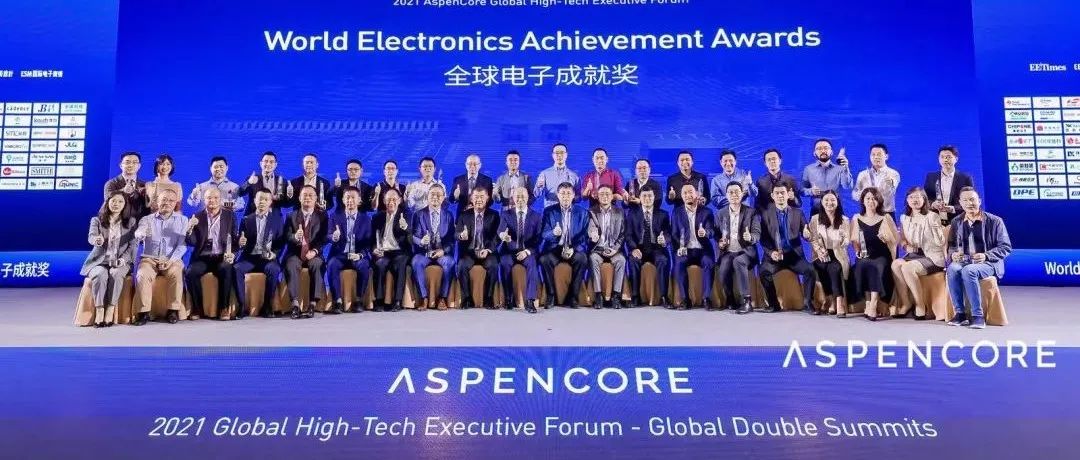
2021 年全球电子成就奖获奖名单揭晓
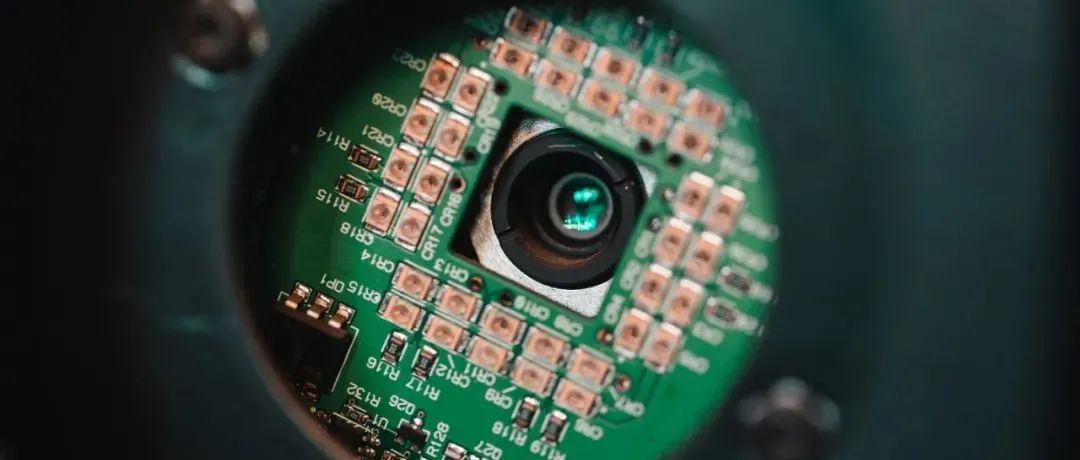
中国工程师最喜欢的10大CMOS图像传感器芯片
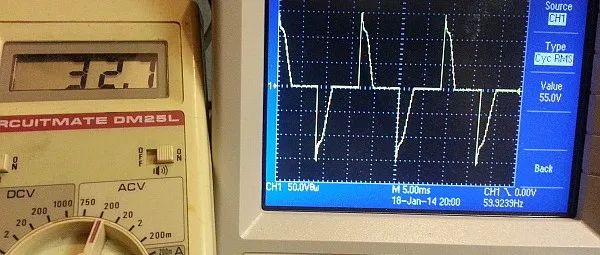
几个糟糕电路设计,看看问题都出在哪里?
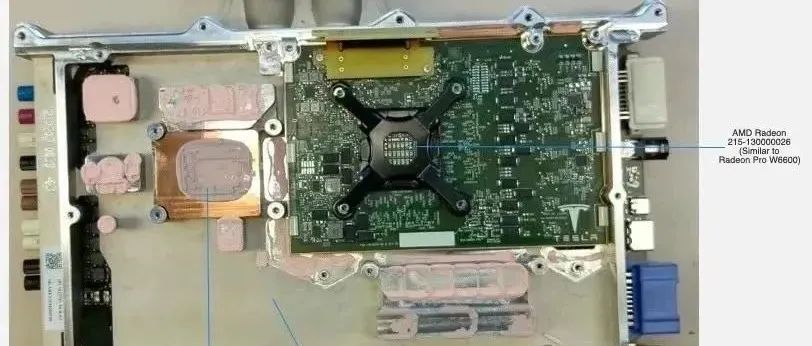
特斯拉最新中央计算模块(CCM)解析
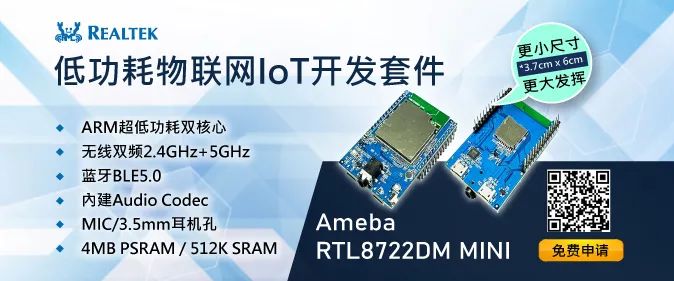
点击阅读原文,免费赠送
市场价
192